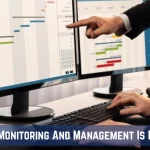It’s important to keep track of how well employees are doing at work to help the organization achieve its goals smoothly. Monitoring employee performance is a smart way to support their growth and improve their skills.
Your main goal should be to set up a strong employee performance tracker system that benefits both the employee and the organization. This includes job satisfaction, finding the right role, boosting morale, and keeping motivation high. HR managers and leaders should understand this process, evaluate it, and make it part of the workplace culture. This will create a system that helps employees reach their full potential and supports them in the long run.
In this blog, Let’s explore ways to improve employee performance tracking. Also, we will discover how it can contribute to the organization’s success.
Listen To The Podcast Now!
What is Employee Performance Tracking?
Employee Performance Tracking is the systematic process of monitoring, evaluating, and analyzing an employee’s productivity, efficiency, and effectiveness in fulfilling their job responsibilities. It involves setting clear performance goals, collecting relevant data through various methods such as regular assessments, feedback from supervisors, and objective metrics, and then assessing the individual’s performance against those benchmarks.
This helps organizations identify areas of improvement, recognize top performers, and make informed decisions regarding promotions, training, or disciplinary actions. By continuously monitoring employee performance, businesses can enhance productivity, optimize resource allocation, and foster a culture of accountability and continuous improvement.
Importance of Employee Performance Tracking
Effective workforce performance monitoring offers a myriad of benefits for both employees and employers. Let’s delve into some of the key reasons why organizations should prioritize this essential aspect of workforce management.
- Enhanced Productivity: Tracking employee performance enables organizations to identify high-performing individuals and teams. Recognizing and rewarding productivity boosts morale and motivates employees to maintain and improve their performance.
- Goal Alignment: Employee performance tracking helps align individual and team goals with organizational objectives. This ensures that every effort contributes to the overall success of the company.
- Identifying Training Needs: Through performance monitoring, employers can identify areas where employees may need additional training or development. This proactive approach ensures a skilled and adaptable workforce.
- Employee Engagement: Regular feedback and acknowledgement of achievements foster a positive work environment, leading to increased employee engagement. Engaged employees are more likely to stay with the company and contribute to its success. You can utilize an employee engagement tool to enhance engagement.
- Fair Compensation: Accurate progress tracking aids in determining fair compensation based on merit. This ensures that high-performing employees receive appropriate recognition for their contributions.
- Continuous Improvement: Tracking performance allows for continuous improvement by identifying areas of weakness and implementing strategies to address them. This contributes to overall organizational growth.
9 Best Ways To Improve Employee Performance Tracking
Now that we understand the importance of employee performance tracking and have identified a top tool like EmpMonitor, let’s explore nine effective ways to implement performance monitoring in your organization.
Managing a productive and successful workforce requires staff progress tracking. To meet the organization’s goals and contribute to its success, it includes monitoring and evaluating employees’ work.
Implementing an effective employee performance tracker can lead to increased productivity, better employee engagement, and improved overall organizational performance. Here are the best ways to track employee performance:
Establish Clear Goals and Expectations
Before implementing any employee performance tracking system, it is essential to establish clear and measurable goals for each employee. These goals should be aligned with the overall objectives of the organization. Clear expectations help employees understand what is expected of them, making it easier to track their performance.
Regular Performance Reviews
Regular performance reviews allow managers to provide constructive feedback to employees. These reviews provide an opportunity to discuss achievements, and areas for improvement, and set new goals. Regular communication helps employees feel valued and aware of their performance, fostering a positive work environment.
Utilize Key Performance Indicators (KPIs)
Key Performance Indicators are specific metrics that reflect an employee’s performance in various areas. These can include productivity, sales targets, customer satisfaction, and more. By identifying and monitoring relevant KPIs, managers can gain insights into each employee’s contributions and address any issues promptly.
Implement 360-Degree Feedback
360-degree feedback in employee performance tracking involves collecting feedback from peers, subordinates, and supervisors. This holistic approach provides a well-rounded view of an employee’s performance. It encourages collaboration and helps employees understand how their actions impact their colleagues and the organization.
Employee Self-Assessment
Promote employees to assess their performance through an employee self-evaluation and set their own goals. Self-assessment promotes self-awareness and accountability as employees in their professional development. This collaborative approach fosters a sense of ownership and motivation.
Recognition and Rewards Programs
Implementing recognition and rewards programs can positively impact employee performance tracking. Acknowledging and rewarding achievements, both big and small, boosts morale and encourages employees to strive for excellence. Public recognition also contributes to a positive workplace culture and helps turn team members into high performing employees.
Continuous Training and Development
Investing in ongoing training and development opportunities demonstrates a commitment to employee growth. Regular skill-building sessions and workshops keep employees updated on industry trends and best practices, enhancing their performance and contribution to the organization.
Encourage Open Communication
Establishing open communication channels is crucial for effective performance monitoring. Employees should feel comfortable discussing their concerns, seeking guidance, and providing feedback. A transparent communication culture fosters trust and helps address performance issues proactively.
Use Performance Management Software
Leveraging performance management software streamlines the tracking process. These tools often include features such as goal setting, progress tracking, and performance analytics. Automation reduces administrative burdens, allowing managers to focus on providing valuable feedback and coaching.
Empmonitor is one such tool that offers complete performance management solutions, facilitating seamless goal alignment, progress monitoring, and insightful analytics. Its automation capabilities alleviate administrative tasks, empowering managers to dedicate more time to constructive feedback and effective coaching.
Also Read
HOW TO CREATE POSITIVE WORK ENVIRONMENT IN 09 STEPS
WORKFORCE MANAGEMENT, THE FUTURE OF THE NEW ERA…
HOW TO PERFORM EMPLOYEE PERFORMANCE TRACKING FOR MAXIMUM RESULTS?
Employee Performance Tracking With EmpMonitor
When it comes to employee performance tracking, having the right tools in place is essential for efficiency and accuracy. EmpMonitor is a leading employee monitoring software that stands out for its comprehensive features and user-friendly interface.
EmpMonitor offers real-time monitoring of employee activities, allowing organizations to track tasks, time spent on projects, and overall productivity. With features like website and application tracking, keystroke logging, and screenshot capture, it also provides detailed insights into employee performance.
Additionally, EmpMonitor allows for customizable reports, making it easy for managers/employers to analyze performance data and make informed decisions. The tool also prioritizes data security, ensuring that sensitive information is protected.
What Are The Benefits of Employee Performance Tracking
Employee performance tracking can offer several benefits for both employees and the organization. Here are eight advantages:
- Objective Evaluation: Performance monitoring allows for an objective evaluation of an employee’s work. This employee evaluation technique provides a basis for assessing achievements, identifying areas for improvement, and setting realistic goals.
- Feedback and Development: Regular progress tracking facilitates continuous feedback. Employees can receive constructive feedback on their strengths and areas needing improvement, fostering professional development and skill enhancement.
- Recognition and Rewards: Recognizing and rewarding high performers based on tracked metrics can boost morale and motivation. It creates a positive work environment and encourages employees to strive for excellence.
- Succession Planning: By consistent employee performance tracking, organizations can identify potential leaders and successors for key roles. This aids in succession planning and ensures a smooth transition when key personnel leave or move to different roles.
- Resource Allocation: Understanding employee performance helps in efficient resource allocation. Managers can allocate tasks and responsibilities based on individual strengths, ensuring that the right people are assigned to the right roles.
- Performance Improvement: The tracking process itself can motivate employees to improve their performance. Knowing that their work is being monitored often encourages individuals to put in their best effort and take responsibility for their tasks.
Consider the importance of approaching performance monitoring with sensitivity and fairness. Transparent communication and a focus on improvement rather than punishment can greatly contribute to fostering a positive and productive work environment. Moreover, it’s crucial to respect employee privacy and ethical considerations when implementing performance-tracking systems. This approach can help ensure that the process is constructive and supportive for all involved.
Conclusion
Effective employee performance tracking is crucial for organizational success, fostering productivity, goal alignment, and a positive work environment. Utilizing tools like EmpMonitor and implementing clear expectations, regular feedback, and key performance indicators enhances the tracking process.
Technology streamlines this with real-time insights. A holistic approach involves recognizing achievements, promoting self-assessment, and adopting a 360-degree feedback system. Continuous training and performance improvement plans support employees in excelling in their roles. These best practices benefit individuals and contribute to overall company growth.
With the right tools and strategies, performance tracking becomes valuable for cultivating a culture of excellence and continuous improvement, ensuring the success of both employees and the organization.







